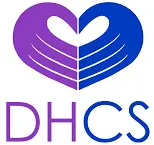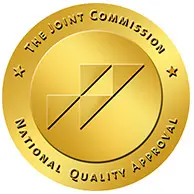Bipolar Disorder Treatment
In Orange
County
The Path To Sound Mind, Body and Soul
Orange County Luxury Residential Mental Health Facilities
Bipolar disorder treatments aim to help individuals living with the condition to lead healthy and active lifestyles. About five million people (2.8% of adults) in the U.S. have this condition, making bipolar disorder the top neurological brain disorder in the country.
Diagnosed patients experience mood swings that affect their performance in daily activities. Consider our mental health experts at Acera Health to help you or your loved one living with bipolar disorder.
We aim to achieve mental wellness through comprehensive therapies and medication that suit unique bipolar disorder cases. Allow our specialists to identify the best treatment method for you or your loved one with bipolar disorder.
Take our Bipolar Quiz to explore your symptoms and see if they align with those of a bipolar disorder diagnosis.
About Bipolar Disorder
Bipolar disorder is a mental illness associated with unusual mood changes. An extremely elevated mood is called mania. Meanwhile, a patient may experience less severe mood elevations called hypomania. Bipolar patients also experience depressive episodes where they feel hopeless and indifferent, causing low activity levels.
Different types of bipolar disorder depend on the severity and frequency of a patient’s episodes. Bipolar disorder includes three main types:
- Bipolar I: Patients experience at least one manic episode. These patients may experience hypomanic or major depressive episodes before and after the manic episode. Men and women experience bipolar I disorder equally.
- Bipolar II: Patients experience one two-week-long major depressive episode. These patients may also experience up to one four-day long hypomanic episode. More women than men tend to experience bipolar II disorder.
- Cyclothymia: Patients experience hypomanic and depressive episodes. However, episodes of this bipolar type are shorter and less severe than the episodes under the other two types. Most people with cyclothymia experience only one or two months of stable moods.
Mental health experts can help determine what type of bipolar disorder with which a person lives. Consider getting in touch with our professionals at Acera Health to discuss your diagnosis.
Bipolar Disorder Causes
Although bipolar disorder is the top occurring mental health disorder in America, medical experts remain unclear about the primary causes for this condition. Still, doctors and researchers associate bipolar disorder with some factors:
- Brain Structure: Mental health experts believe that abnormalities in a person’s brain structure may impact their risk for bipolar disorder.
- Unique Genetics: Some people with bipolar disorder in their family history are more likely than others without bipolar relatives.
- External Factors: Mental health researchers associate extreme stress, physical illnesses, and traumatic experiences as external factors that influence bipolar disorder.

Along with the above factors, there always exist the possibility of co-occurring disorders. This is where both a substance abuse disorder and a mental health disorder are present in an individual. These co-occurring disorders, also known as a dual diagnosis, can play into one another and increase the severity of the other’s symptoms.
Patients may develop bipolar disorder if they experience any of these factors individually. However, combinations of these factors may contribute further to the condition’s development. Consider speaking with a mental health expert to confirm whether you or your loved one has bipolar disorder as a result of these causes.
Bipolar Disorder Symptoms
Bipolar disorder involves three main symptoms, each with different signs associated with them:
- Mania: Manic patients feel emotional highs, such as excitability, impulsiveness, euphoria, and extreme energy. Manic episodes may involve people engaging in drug use, spending sprees, and unprotected sex.
- Hypomania: Hypomanic patients may experience similar symptoms to manic patients, although not as severe. People with hypomania may still perform regularly at work, school, or in social situations but have noticeable changes in their mood.
- Depression: Depressed patients may experience loss of energy, deep sadness, hopelessness, getting too much or too little sleep, suicidal thoughts, and lack of interest in the activities they typically enjoy.
Bipolar disorder’s varied symptoms tend to make diagnosis challenging. Many people confuse the symptoms of bipolar disorder with other disorders, such as schizophrenia. Consider speaking with a mental health specialist to determine the best steps to take in navigating what you might believe is bipolar disorder.
Treatment for Bipolar Disorder
The existing bipolar disorder treatments help patients manage their condition. Taking medicine, undergoing therapy, and adopting lifestyle changes are the three main mental health treatment options for bipolar disorder.
Medication
Licensed mental health professionals may recommend the following medicine to bipolar patients:
- Antipsychotics: These include olanzapine or Zyprexa
- Antidepressant-Antipsychotics: These include fluoxetine-olanzapine or Symbyax
- Benzodiazepines: These include alprazolam or Xanax, which is an anti-anxiety medication that works as a short-term bipolar treatment.
- Mood Stabilizers: These include lithium or Lithobid.
Therapy
Mental health experts may recommend psychotherapy treatments depending on a person’s bipolar condition:
- Cognitive Behavioral Therapy: This talk therapy involves conversations between the bipolar patient and a licensed therapist. The conversation aims to help the patient discover alternate ways to manage their disorder through positive coping mechanisms.
- Psychoeducation: This method includes the patient and their concerned loved ones to help everyone involved to understand the disorder. Having everyone in a patient’s life know more about the condition helps everyone adjust healthily.
- Interpersonal and Social Rhythm Therapy: IPSRT involves strategies to help a patient regulate their everyday habits, including eating, exercising, and sleeping. This therapy aims to help patients manage their disorder by targeting their daily basic tasks and finding balance.

Lifestyle Changes
People who experience the symptoms associated with bipolar disorder can adopt simple steps to manage their condition:
- Ask Loved Ones for Support: Patients can turn to their friends or relatives to help them through their treatment plans.
- Routine Daily Basics: Bipolar patients can have a clear idea of what to do in a day by following a routine for eating and sleeping.
- Understand Mood Swings: Recognizing when a person experiences mood swings helps them understand what to do the next time that they experience an episode.
Acera Health's Bipolar Disorder Treatment Program
While these simple steps can be helpful, speaking to a mental health professional may still be the best action to understand what you are going through. Licensed doctors and healthcare providers know the best when it comes to regulating bipolar disorder. Consider seeking help for bipolar disorder at our treatment centers.
Get in touch with the mental health professionals at Acera Health. We provide bipolar treatment in Orange County to help patients understand their condition and live healthily despite it. Allow us to help you identify the best solution for your unique situation.

Reach Out Today
To learn more about if Acera Health is right for you, and what to expect, contact us Today!
"*" indicates required fields
3100 Bristol St. Suite # 250 Costa Mesa, CA 92626
info@acerahealth.com
DHCS license number: MHBT220400
DHCS license expiration date: July 20, 2024
DSS license number: 306006131 & 306006072



